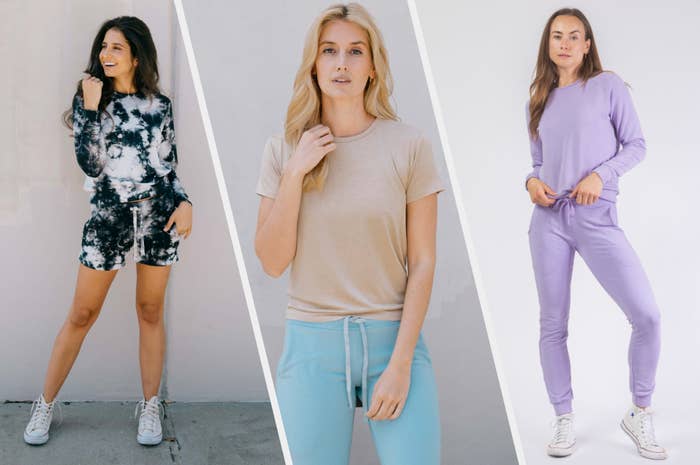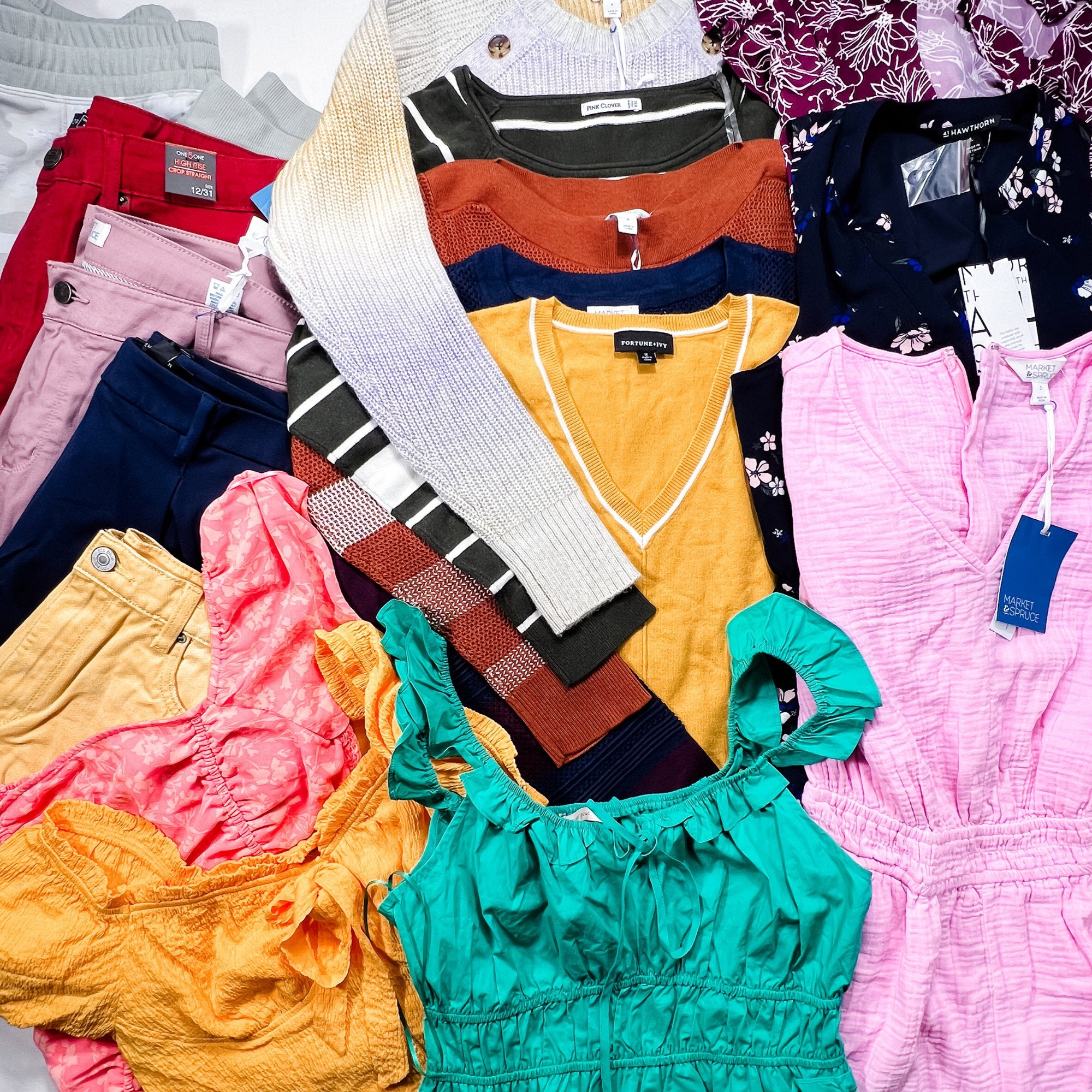The Role of Fabric in Defining Quality in Branded Clothing
The Role of Fabric in Defining Quality in Branded Clothing
Blog Article
The Value of Lasting Garments: Exactly How It Affects the Atmosphere and Your Closet
Sustainable garments is progressively acknowledged for its essential function in decreasing the environmental impact of the fast garment industry. By concentrating on green products and ethical production methods, it deals with pushing ecological concerns. This shift not just benefits the earth but also affects customer selections, bring about an extra thoughtful strategy to wardrobe management. Recognizing these characteristics elevates essential questions concerning style's future and individual duty in shaping it.
The Environmental Impact of Fast Style

Advantages of Lasting Materials
Lasting products use substantial benefits, specifically with eco-friendly material choices that minimize ecological injury. These materials additionally demonstrate resilience and long life, decreasing the demand for frequent replacements. Consequently, they add to an extra sustainable style industry and advertise liable customer habits.
Eco-Friendly Textile Choices
While the garment industry has long been related to rapid fads and environmental harm, the surge of environment-friendly textile options offers a transformative opportunity. Lasting materials such as natural cotton, hemp, and Tencel have actually gained appeal due to their reduced eco-friendly impact. These materials are commonly created without unsafe pesticides and need less water, reducing their carbon impact - Branded Clothing. Additionally, lots of green materials are naturally degradable, adding to a round economy by minimizing waste. Choosing sustainable materials not only supports ecologically accountable techniques yet additionally advertises much healthier communities. As consumers become much more aware of their buying power, the demand for environmentally friendly materials motivates brands to introduce and adopt even more sustainable production approaches, inevitably benefiting the earth and future generations
Sturdiness and Longevity Benefits
Lots of customers are increasingly identifying the durability and long life advantages of sustainable materials in their apparel choices. Unlike traditional fabrics, lasting materials such as organic cotton, hemp, and recycled polyester are crafted to stand up to wear and tear, leading to garments that last much longer. This reduced frequency of substitute not just saves consumers cash in time but additionally lessens waste generated by rapid fashion. Additionally, lasting garments usually utilizes green production methods that improve textile strength, contributing to a decrease in the overall carbon impact. By investing in durable apparel, consumers can cultivate an extra lasting closet while taking pleasure in premium items that keep their aesthetic and functionality gradually. Consequently, sturdiness and longevity stand as vital benefits of picking lasting materials.
Decreasing Waste With Lasting Practices
Lowering waste in the style industry can be attained through cutting-edge techniques such as upcycling and repurposing products. Furthermore, adopting minimal closet strategies urges consumers to focus on high quality over amount, inevitably lowering clothing usage. Together, these techniques contribute significantly to a more lasting garments design.
Upcycling and Repurposing Products
Upcycling and repurposing products have become ingenious techniques in the fashion business, changing thrown out textiles right into important brand-new items. This strategy not only reduces waste yet likewise urges imagination and individuality in apparel style. By taking old garments and materials, developers can create distinct pieces that show individual style while minimizing the demand for brand-new sources. Furthermore, upcycling commonly needs less energy and water compared to standard manufacturing processes, substantially lowering the ecological impact of style. As customers become more mindful of sustainability, the popularity of upcycled clothing remains to increase, promoting a round economic climate. Inevitably, these techniques contribute to a much more sustainable future, where style prioritizes environmental health and wellness over fast manufacturing and usage.

Minimalist Wardrobe Strategies
As individuals increasingly look for to decrease their environmental effect, taking on minimalist wardrobe approaches has gained grip as an efficient method to lasting fashion. These strategies highlight quality over amount, encouraging customers to curate a smaller sized collection of flexible, resilient garments. By focusing on ageless items that can be combined and matched, people can lower the regularity of purchases and ultimately reduce waste.Additionally, minimalism advertises mindful usage, advising shoppers to reflect on the moral and ecological ramifications of their options. This approach not just fosters a much more sustainable lifestyle but also streamlines everyday decision-making regarding attire. As people embrace minimalist concepts, they add to a fashion culture that values sustainability and responsible consumerism, eventually resulting in a much more eco-conscious society.
The Role of Moral Labor in Lasting Fashion
While lots of consumers are progressively knowledgeable about the environmental consequences of their apparel options, the relevance of honest labor techniques in lasting style can not be overlooked. Moral labor incorporates fair salaries, safe working conditions, and regard for employees' civil liberties, developing the foundation of accountable fashion production. Brand names that focus on ethical labor not only boost neighborhoods however additionally established a standard for responsibility in the industry.Moreover, the combination of ethical methods fosters transparency, enabling consumers to make enlightened options concerning their purchases. This technique contrasts dramatically with fast fashion's unscrupulous labor models, which often focus on earnings over people. By sustaining business committed to moral labor, consumers add to a system that values human dignity together with environmental sustainability. Ethical labor is not merely an add-on; it is crucial to the more comprehensive goal of sustainable fashion, making sure that the mission for eco-friendliness does not come at the cost of human legal rights.
The Influence of Sustainable Garments on Carbon Emissions
Lasting clothes has the possible to significantly minimize carbon emissions connected with the fashion business. Conventional garment production adds significantly to greenhouse gas discharges, largely as a result of energy-intensive manufacturing processes and using non-renewable resources. On the other hand, sustainable fashion concentrates on green products, such as natural cotton or recycled fibers, which often call for less energy to produce.Moreover, lasting brand names have a tendency to take on more effective manufacturing methods, decreasing waste and lowering find out here now total exhausts. By prioritizing durability and timeless layout, lasting clothes urges consumers to purchase much less often, further decreasing the carbon footprint related to overconsumption.Additionally, several lasting brands are dedicated to openness in their supply chains, allowing customers to make educated selections that align with their worths. Ultimately, shifting in the direction of lasting clothing can bring about a substantial decrease in carbon exhausts, adding to a healthier earth and a much more lasting future for the fashion business.
Sustaining Regional Economic Climates With Sustainable Choices
The change towards lasting clothing not just addresses ecological worries however additionally substantially advantages neighborhood economic climates. By picking sustainable fashion, consumers often sustain little companies and regional artisans, boosting area resilience. These enterprises generally operate on a smaller scale, focusing on craftsmanship and moral methods over mass production.Investing in locally made lasting clothes promotes task production and boosts financial growth within neighborhoods. As consumers end up being extra familiar with the ecological impact of their acquisitions, they progressively seek products that show their worths. This demand urges regional manufacturers to embrace lasting practices, adding to a circular economy.Moreover, supporting local organizations reduces transport exhausts, straightening with eco-conscious consumer actions. The interconnectedness of lasting clothing and regional economic situations underscores the vital duty that specific choices play in promoting both financial and environmental wellness. By promoting these local connections, neighborhoods can grow while also functioning in the direction of a much more lasting future.
Changing Your Closet: Tips for a Lasting Wardrobe
As individuals seek to decrease their ecological influence, transforming a wardrobe into a lasting wardrobe ends up being an important action. One efficient technique is to assess existing clothes, keeping only things that my blog are put on routinely which align with sustainability objectives. Prioritizing quality over quantity is crucial; investing in resilient pieces from eco-friendly brands can significantly reduce waste.Additionally, incorporating pre-owned items can take a breath new life right into a wardrobe while decreasing environmental damage. Organizing clothes swaps with close friends or donating extra things can additionally advertise sustainability.When buying, people need to look for materials that are natural, recycled, or eco-friendly, and stay clear of fast style retailers - Branded Clothing. Practicing mindful intake by attentively considering each purchase can contribute to an extra sustainable lifestyle. By applying these pointers, one can produce a closet that reflects personal design while sustaining ecological stewardship
Regularly Asked Questions
How Can I Recognize Lasting Clothes Brands?
To identify sustainable apparel brand names, one need to look into materials used, look for accreditations like Fair Trade, and check out the brand name's transparency concerning their production processes, labor techniques, and ecological impact, making certain green and honest techniques are prioritized.
What Are the Costs Related To Sustainable Fashion?
The expenses linked with sustainable style can differ considerably. Higher production expenditures, honest sourcing, and green materials commonly bring about boosted retail prices, which may prevent some customers while attracting ecologically mindful shoppers.
Can Sustainable Clothing Be Elegant and Fashionable?
Lasting apparel can certainly be fashionable and stylish. Designers progressively prioritize ingenious materials and ethical manufacturing approaches, proving that style and sustainability can coexist. Customers currently have varied alternatives that blend aesthetic appeals with ecological awareness.
How Does Washing Garments Affect Their Sustainability?
Cleaning garments greatly influences sustainability by consuming water and power, adding to air pollution, and causing microplastic launch. Regular cleaning can degrade materials, reducing their life expectancy and enhancing the need for substitutes, inevitably worsening environmental problems.
What Is the Life-span of Lasting Clothes Contrasted to Rapid Fashion?
The click to investigate life-span of lasting clothing usually goes beyond that of rapid style things, often long-term a number of years due to top quality materials and workmanship. On the other hand, fast fashion garments may deteriorate quickly, necessitating even more frequent substitutes. Lasting clothing is significantly recognized for its important duty in lessening the ecological effect of the quick style industry. While many consumers are increasingly aware of the ecological repercussions of their garments choices, the importance of ethical labor techniques in sustainable fashion can not be neglected. Branded Clothing. Lasting garments has the prospective to greatly lower carbon exhausts linked with the fashion industry. In contrast, lasting style focuses on environment-friendly products, such as natural cotton or recycled fibers, which usually require less power to produce.Moreover, lasting brands often tend to take on extra effective manufacturing methods, lessening waste and reducing overall exhausts. By prioritizing longevity and ageless layout, sustainable garments urges consumers to get less often, further minimizing the carbon impact associated with overconsumption.Additionally, many lasting brand names are dedicated to transparency in their supply chains, making it possible for customers to make enlightened selections that straighten with their worths
Report this page